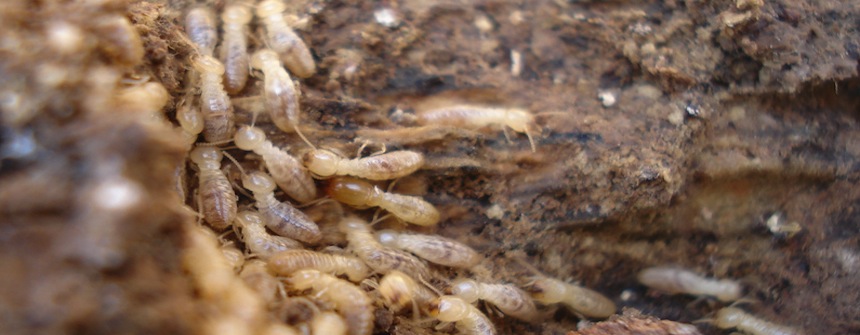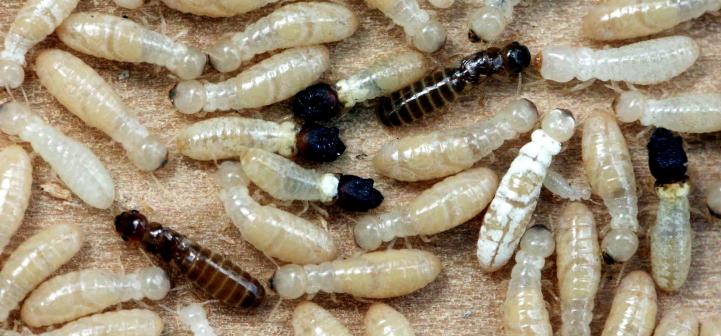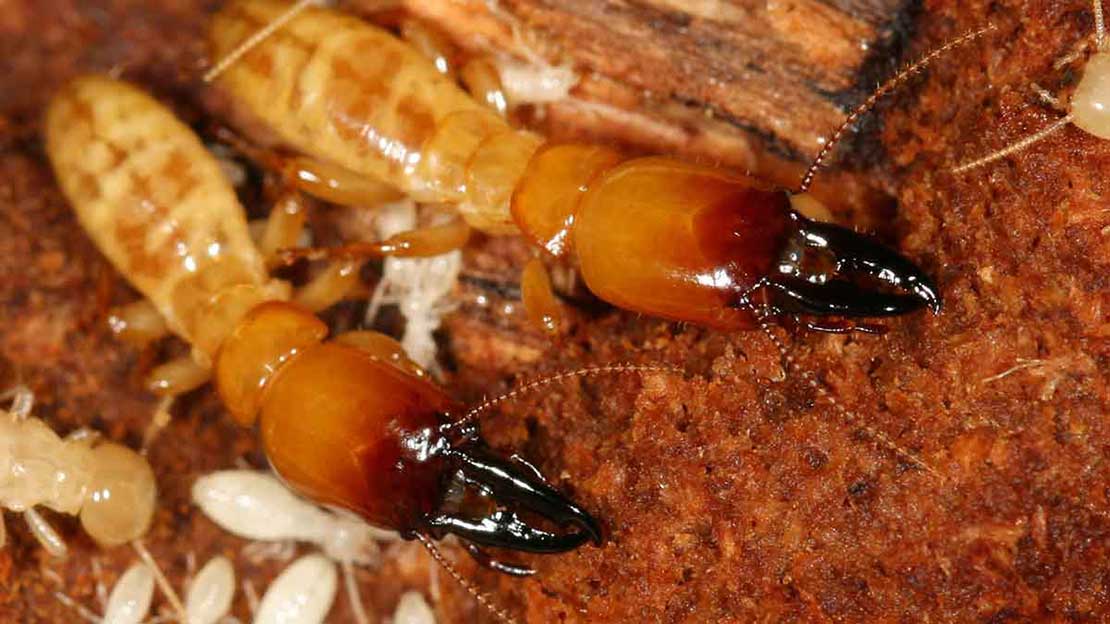
Termites or white ants are not “Ants” at all. They more resemble to cockroaches and develop from hundred to two hundred million years of evolutionary history. Termites are small, white tan or black coloured insect belonging to order Isoptera. The Latin word Isoptera means equal wings and refers that front set of wings of reproductive termites is similar in size and shape to hind set. Termites are classified into three types viz. Dry Wood, Damp wood and Subterranean termites.
Termites are considered to be the most destructive insect pests in the world. Many buildings and structures are damaged by these pests each year resulting in huge financial losses. Termites are classified into three types viz. Dry Wood, Damp wood and Subterranean termites.

Drywood termites form colonies of up to 2,500 members. Drywood Termite colonies don’t have workers. Younger termites, called "false workers", do all the work for the colony. Common Name: Drywood Termite, Size: 3/8" to 1", Shape: Long, narrow, oval, Color: Light brown, Legs: 6, Wings: Yes, Antenna: Yes, Class: Insecta, Order: Isoptera, Species: Varies, Family: Kalotermitidae
Lifecycle
DIET Drywood Termites eat wood, wallpaper, plastics and fabric made from plants.
HABITAT
Drywood Termite colonies are usually found in dry wood and they do not require moisture or contact with the soil. Habits
IMPACT
Drywood termites can build nests and dig tunnels in buildings. These tunnels cause major damage because the wooden support beams can become weak and make the building lean or fall down.
PREVENTION

Dampwood termites are normally larger in size than other termite species. Like Drywood Termites, Dampwood colonies don’t have workers. Younger termites called "false workers" do all the work for the colony.
Common Name: Dampwood Termite, Size: 1/2" to 5/8", Shape: Long, narrow, oval, Color: Brownish, Legs: 6, Wings: Yes, Antenna: Yes, Class: Insecta, Order: Isoptera, Species: Varies, Family: Hodotermitide
DIET
Dampwood termites like to live and feed in very moist wood.
HABITAT
Because they need lots of moisture, Dampwood Termites usually live in damp, dying wood or in houses with leaking plumbing that keeps the wood wet.
IMPACT
Dampwood termites do not carry disease and don’t usually bother buildings because there is not enough water in the wood.
PREVENTION

Subterranean Termite colonies can have up to 2 million members! Their colonies are divided into three groups: workers, soldiers and reproductives.
Common Name: Subterranean Termite, Size: 1/8" to 1", Shape: Long, narrow, oval, Color: Creamy brown, Legs: 6, Wings: Yes, Antenna: Yes, Class: Insecta, Order: Isoptera, Species: Varies, Family: Rhinotermitidae
DIET
Termites eat wood, wallpaper, plastics and fabric made from plants.
HABITAT
Subterranean termites need contact with the soil to survive. They live in underground colonies or in wet areas aboveground. They build tunnels to reach food and every spring, groups of reproductive termites fly off to start new colonies.
Habits • Nests are built in the soil and these termites are very dependent on soil for moisture. • In their search for food, subterranean termites construct mud tubes because they are susceptible to desiccation when exposed to air. • Subterranean termites usually work their way above ground to reach wood or any other cellulose source. The cellulose is then broken down into simple starch with the help of protozoans in the termites’ gut.
IMPACT
Subterranean termites are the most destructive kind of termite. They can eat a lot of wood and they can cause a lot of expensive damage to a house! They can destroy building foundations, wooden support beams, plastic plumbing pipes, sub-flooring, insulation … even swimming pool liners and filtration systems! Termites can also injure or destroy living trees and shrubs.
PREVENTION
Residential Customers
Corporate Clients
Team Members
Quality Certifications